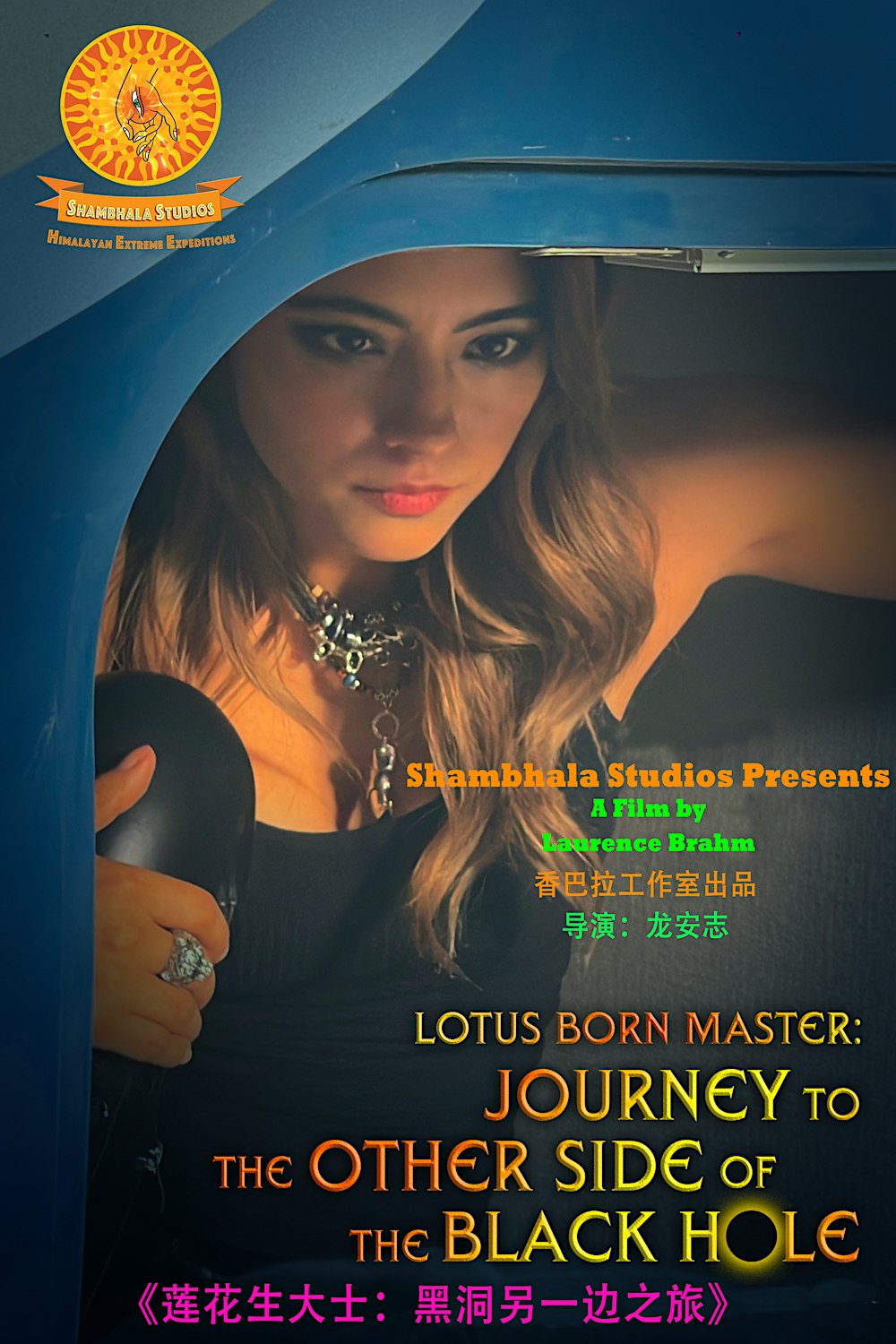Science fiction has long been at the core of Laurence Brahm’s film project, Lotus-Born Master. His most recent film in this series about Padmasambhava, Journey to the Other Side of the Black Hole, builds on Laurence’s long-held proposition that the de facto founder of Tibetan Buddhism left encoded messages about the nature of reality – including expressions of modern science like quantum mechanics and the cosmic laws of the multiverse – in his various terma (hidden treasures), and in the beyul of the Himalayas (hidden lands). These encoded messages, which can influence the trajectory of entire technologies, require something simple but also profound in order to be decrypted: an inward journey to realize one’s Buddha-nature and inherent luminosity of mind.
This simple-yet-profound method of access is embodied in Laurence’s self-insert character, an explorer and seeker of Shambhala who serves as a frame to the main story. The setting of his movies tends to be a satirical riff of the current state of the world, and his castigating of the US military-industrial complex and the environmental crises of the globe hearken back to his days as a major lawyer, during which he gradually turned into a social activist and began taking on corporate interests.

His rogue’s gallery tends to consist of really only one enemy, which is the Agency that enforces the American president’s will. The president, played by Laurence Carroll Brahm Jr., is a prophetic parody of Barron Trump, and in a case of life imitating art, it seems that Barron could indeed be the successor to the Trump political dynasty, making the portrayal of a younger villainous president perfectly apt for our troubled times. The Agency’s leader, who is always stuck interrogating the explorer, is one of the hammier characters in the Lotus-Born Master series and my personal favorite (Laurence’s character constantly talks over the chief agent’s head, with the concepts being much too profound for the agent to understand, leading to considerable frustration on the agent’s part). The Agency as a whole represents not only the midnight conspirators acting to keep people in the dark about the truth, but also our collective delusions and the attachment we, as humanity, have to those very delusions.
In this film, Laurence presents a new coterie of protagonists that takes on the Agency, which has detained Laurence’s self-insert explorer. The explorer’s repeated capture and interrogation is a consistent and humorous motif in the Lotus-Born Master series. But in Journey to the Other Side of the Black Hole, the Agency faces a compassionate pushback from the reincarnations of Padmasambhava’s primary five consorts. These five consorts are: Yeshe Tsogyal, who has been reborn as a slightly quirky coder at Book of the Face, Tashi Khyidren an investment banker who practices karate on the side, Mandarava a yoga teacher, Kalasidhi a robot psychologist, and Shakyadevi, a punk rocker. Portrayed by beautiful and professional actresses, the five consorts are almost like a Buddhist version of DC’s Birds of Prey. Each of these women live separate lives and have differing interests, but together, can transform the entire “system” of global delusion and distractions.

Made on a limited budget, the film is prioritizes its message over stunning special effects or Marvel-style entertainment. Thanks to its new characters, I see its potential in being built upon with an “expanded universe” of storytelling that could help push Lotus-Born Master into pop culture (or at least Buddhist pop culture). The five reborn consorts would make for a compelling streaming series in their own right, with plotlines focusing on their different strengths as well as their underlying unity. I would certainly enjoy experiencing some form of media that takes on each reborn consort’s challenges and interests. This would allow us to glimpse a more fleshed out and relatable side of their journeys.
For example, Shakyadevi, with her intriguing aesthetic as a punk rocker, would no doubt be dealing with a lot of people in her underground club who are searching for meaning and purpose. She would be some kind of urban therapist with a street-smart edge in contrast to yoga teacher Mandarava. Kalasidhi’s story might revolve around robots, while Yeshe Tsogyal’s tale might revolve around a detective, true crime saga where she uses code and hacking to stop malicious actors from spreading Mara’s anti-enlightenment messages. As a martial arts master with connections to high finance, I suspect Tashi Khyidren’s story would be the most action-packed.
Laurence has made clear his intention to take “Himalayan Wisdom Traditions” global through the vehicles of pop culture. His Lotus-Born Master series is his main vehicle in accomplishing this. Currently, this “franchise” has been limited to films, but there are effectively endless avenues, from video games to comics and beyond, that can serve as powerful vehicles for Padmasambhava’s story in our world, today. This foray of the Lotus-Born Master series into pop culture could have reverberations across the landscape of creative Buddhist world. It is time to embrace storytelling and engrossing fiction. It is time to utilize the platforms that young people actually like and enjoy to change what they think could be entertainment.
The universe of the Lotus-Born Master must be expanded.
Related features from BDG
Echoes of the White Crane: Laurence Brahm’s Tale of Martial Arts as Kinetic Meditation
Searching for the Lotus-Born Master: Following the Father of Vajrayana Buddhism’s Journey Across the Himalayas


